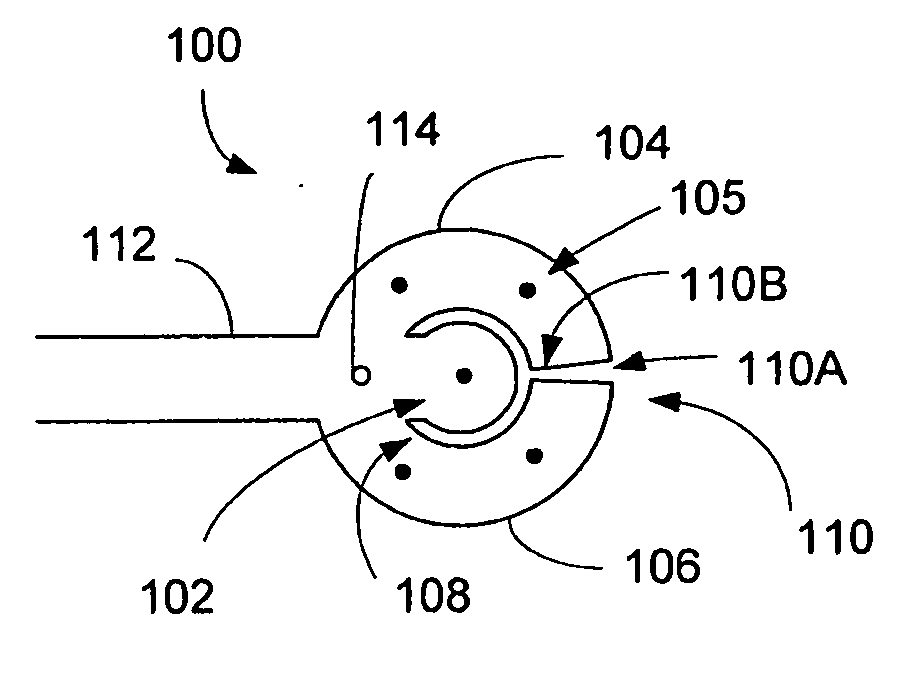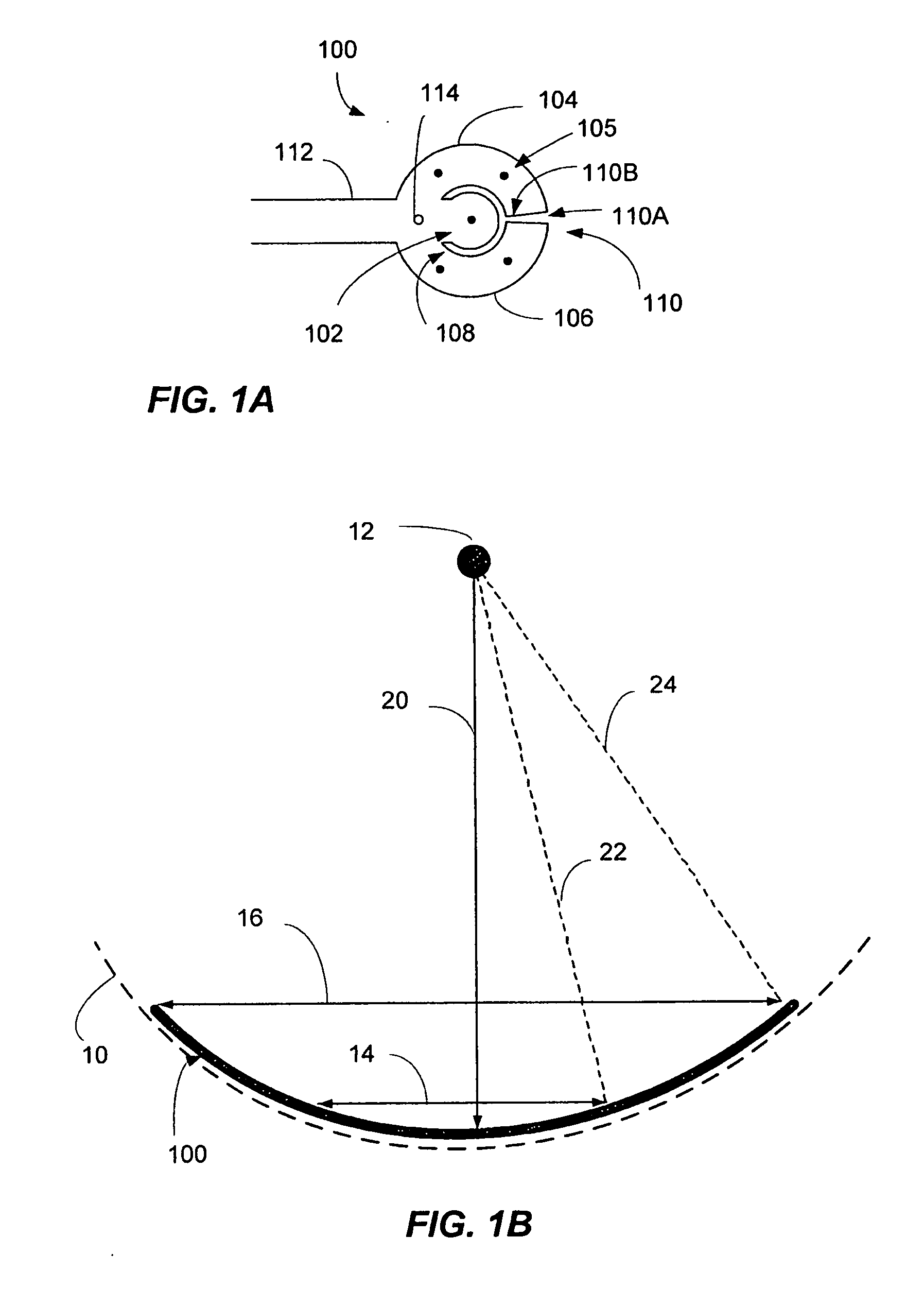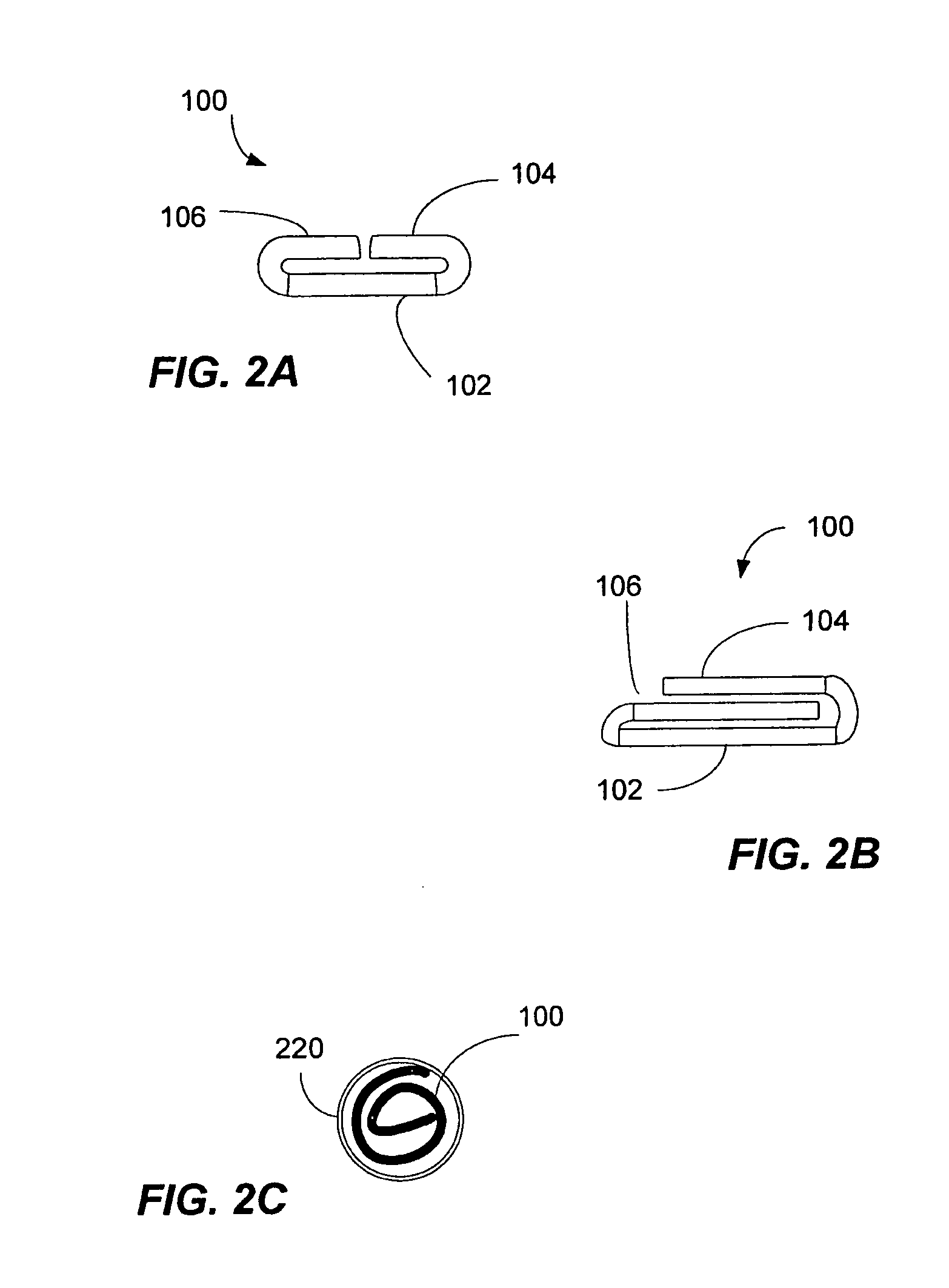Wide-field retinal prosthesis
a wide-field, retinal technology, applied in the field of retinal prosthesis, can solve the problems of loss of central vision, total blindness, and inability to read, and achieve the effect of stimulating vision
- Summary
- Abstract
- Description
- Claims
- Application Information
AI Technical Summary
Benefits of technology
Problems solved by technology
Method used
Image
Examples
Embodiment Construction
[0016] A wide-field retinal prosthesis (or retinal array) is provided that uses retinal stimulating arrays to create vision in both the central and peripheral visual fields. The wide-field retinal prosthesis includes a central member and at least one wing having retinal stimulators embedded therein. The retinal stimulators of the prosthesis cover a substantially wider area of the retina than is typically achievable with prior retinal prosthesis. This enables stimulation of more of the rods and cones of the retina, resulting in a wider field of view and better quality vision for the patient. In the preferred forms, the wide-field retinal prosthesis achieves these improvements without a larger incision in the sclera than would be typical for smaller retinal prosthesis. This is preferably accomplished with a substrate that can be compacted (e.g., rolled) prior to implantation and then uncompacted (e.g., unrolled) after implantation.
[0017]FIG. 1A shows one embodiment of a wide-field re...
PUM
 Login to View More
Login to View More Abstract
Description
Claims
Application Information
 Login to View More
Login to View More - R&D
- Intellectual Property
- Life Sciences
- Materials
- Tech Scout
- Unparalleled Data Quality
- Higher Quality Content
- 60% Fewer Hallucinations
Browse by: Latest US Patents, China's latest patents, Technical Efficacy Thesaurus, Application Domain, Technology Topic, Popular Technical Reports.
© 2025 PatSnap. All rights reserved.Legal|Privacy policy|Modern Slavery Act Transparency Statement|Sitemap|About US| Contact US: help@patsnap.com



